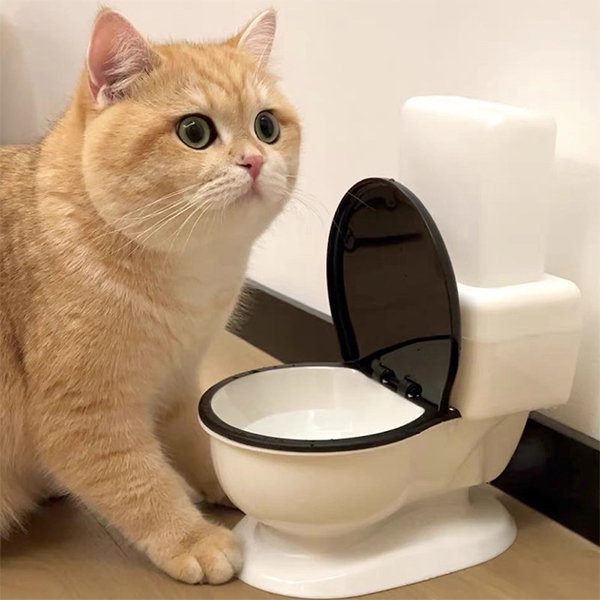Avoid Clogs and Damage: Never Flush Cat Poop Down Your Toilet - Professional Insights
Avoid Clogs and Damage: Never Flush Cat Poop Down Your Toilet - Professional Insights
Blog Article
Just about everyone may have their unique piece of advice involving Don’t flush cat feces down the toilet.
Introduction
As pet cat owners, it's necessary to be mindful of how we dispose of our feline friends' waste. While it might appear practical to flush pet cat poop down the toilet, this technique can have destructive consequences for both the environment and human health.
Alternatives to Flushing
Thankfully, there are safer and a lot more liable ways to take care of pet cat poop. Think about the following choices:
1. Scoop and Dispose in Trash
The most usual approach of disposing of cat poop is to scoop it into a biodegradable bag and toss it in the trash. Be sure to utilize a dedicated clutter scoop and get rid of the waste quickly.
2. Use Biodegradable Litter
Select naturally degradable pet cat clutter made from materials such as corn or wheat. These clutters are eco-friendly and can be securely disposed of in the garbage.
3. Hide in the Yard
If you have a yard, take into consideration burying pet cat waste in a designated area away from vegetable yards and water resources. Make sure to dig deep enough to stop contamination of groundwater.
4. Set Up a Pet Waste Disposal System
Invest in a family pet waste disposal system specifically developed for cat waste. These systems make use of enzymes to break down the waste, reducing smell and ecological influence.
Health and wellness Risks
In addition to ecological concerns, purging feline waste can also position health and wellness threats to people. Pet cat feces may consist of Toxoplasma gondii, a bloodsucker that can trigger toxoplasmosis-- a possibly extreme disease, particularly for expectant women and individuals with damaged immune systems.
Ecological Impact
Purging pet cat poop presents hazardous pathogens and bloodsuckers into the water supply, positioning a substantial threat to water environments. These pollutants can negatively impact aquatic life and compromise water high quality.
Verdict
Liable animal ownership prolongs past supplying food and shelter-- it also includes proper waste management. By avoiding flushing feline poop down the toilet and selecting different disposal approaches, we can reduce our ecological footprint and secure human health and wellness.
Why Can’t I Flush Cat Poop?
It Spreads a Parasite
Cats are frequently infected with a parasite called toxoplasma gondii. The parasite causes an infection called toxoplasmosis. It is usually harmless to cats. The parasite only uses cat poop as a host for its eggs. Otherwise, the cat’s immune system usually keeps the infection at low enough levels to maintain its own health. But it does not stop the develop of eggs. These eggs are tiny and surprisingly tough. They may survive for a year before they begin to grow. But that’s the problem.
Our wastewater system is not designed to deal with toxoplasmosis eggs. Instead, most eggs will flush from your toilet into sewers and wastewater management plants. After the sewage is treated for many other harmful things in it, it is typically released into local rivers, lakes, or oceans. Here, the toxoplasmosis eggs can find new hosts, including starfish, crabs, otters, and many other wildlife. For many, this is a significant risk to their health. Toxoplasmosis can also end up infecting water sources that are important for agriculture, which means our deer, pigs, and sheep can get infected too.
Is There Risk to Humans?
There can be a risk to human life from flushing cat poop down the toilet. If you do so, the parasites from your cat’s poop can end up in shellfish, game animals, or livestock. If this meat is then served raw or undercooked, the people who eat it can get sick.
In fact, according to the CDC, 40 million people in the United States are infected with toxoplasma gondii. They get it from exposure to infected seafood, or from some kind of cat poop contamination, like drinking from a stream that is contaminated or touching anything that has come into contact with cat poop. That includes just cleaning a cat litter box.
Most people who get infected with these parasites will not develop any symptoms. However, for pregnant women or for those with compromised immune systems, the parasite can cause severe health problems.
How to Handle Cat Poop
The best way to handle cat poop is actually to clean the box more often. The eggs that the parasite sheds will not become active until one to five days after the cat poops. That means that if you clean daily, you’re much less likely to come into direct contact with infectious eggs.
That said, always dispose of cat poop in the garbage and not down the toilet. Wash your hands before and after you clean the litter box, and bring the bag of poop right outside to your garbage bins.
https://trenchlesssolutionsusa.com/why-cant-i-flush-cat-poop/

I hope you enjoyed reading our section on How to Dispose of Cat Poop and Litter Without Plastic Bags. Thank you so much for spending some time to browse our article post. Are you aware of somebody who is interested in the topic? Be sure promote it. I am grateful for your time. Visit again soon.
Call Today Report this page